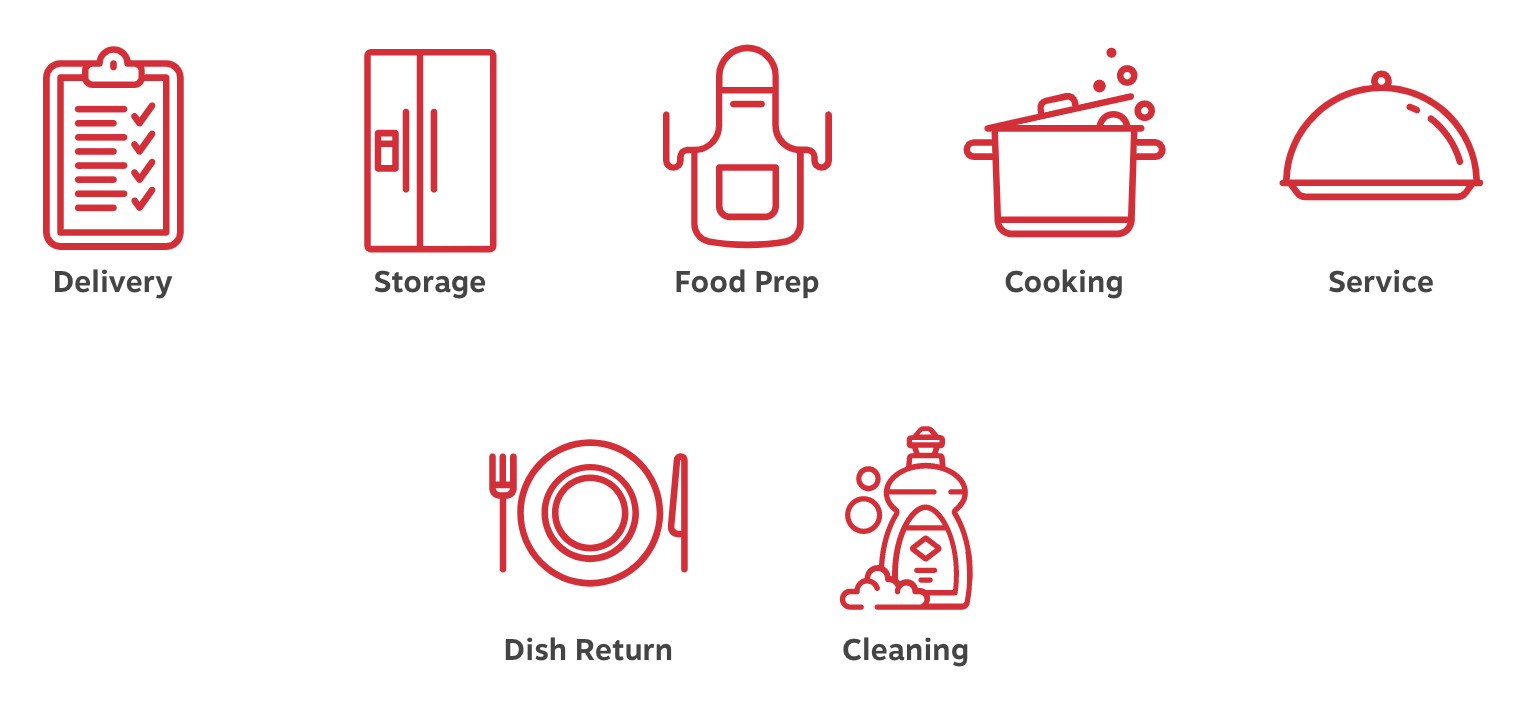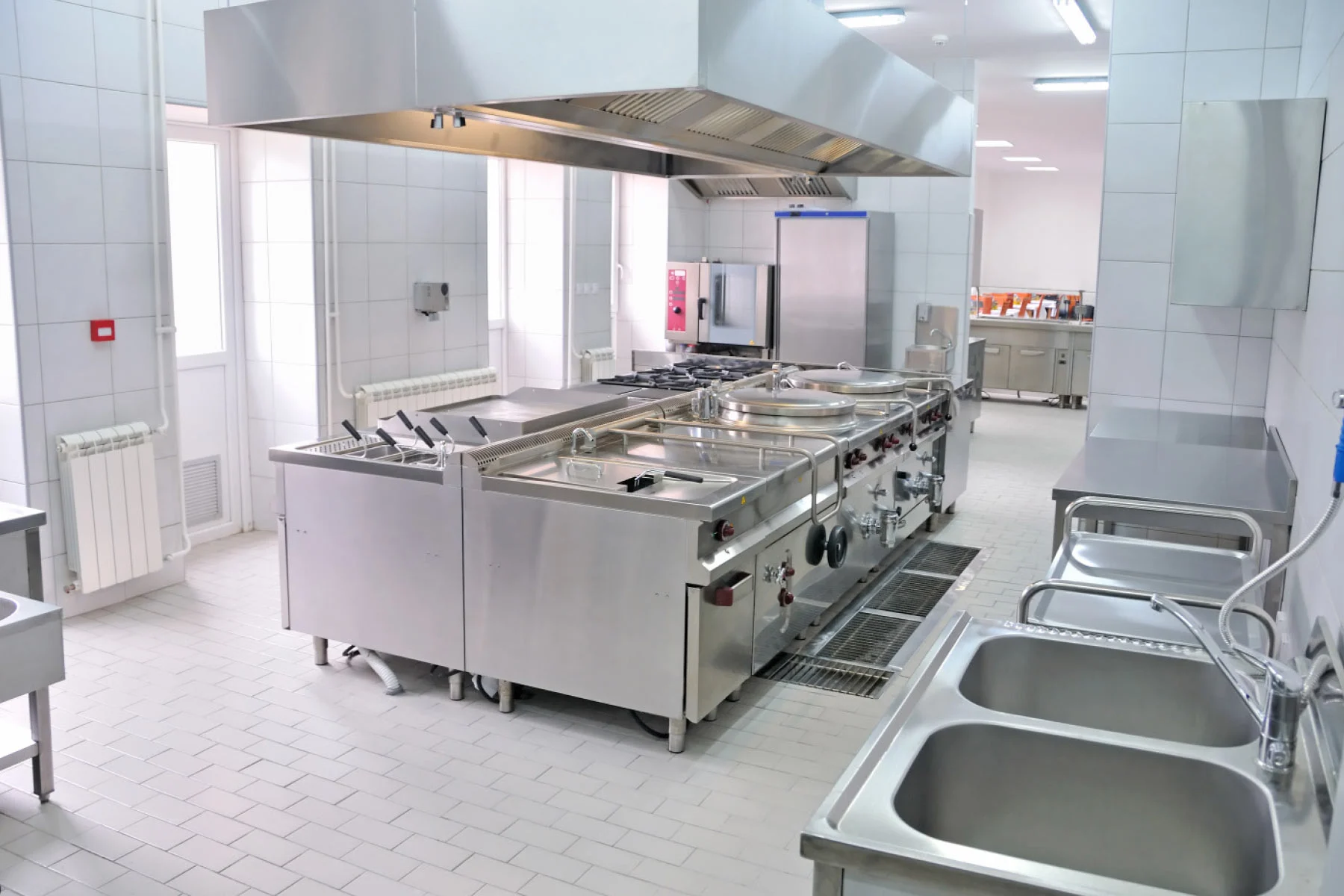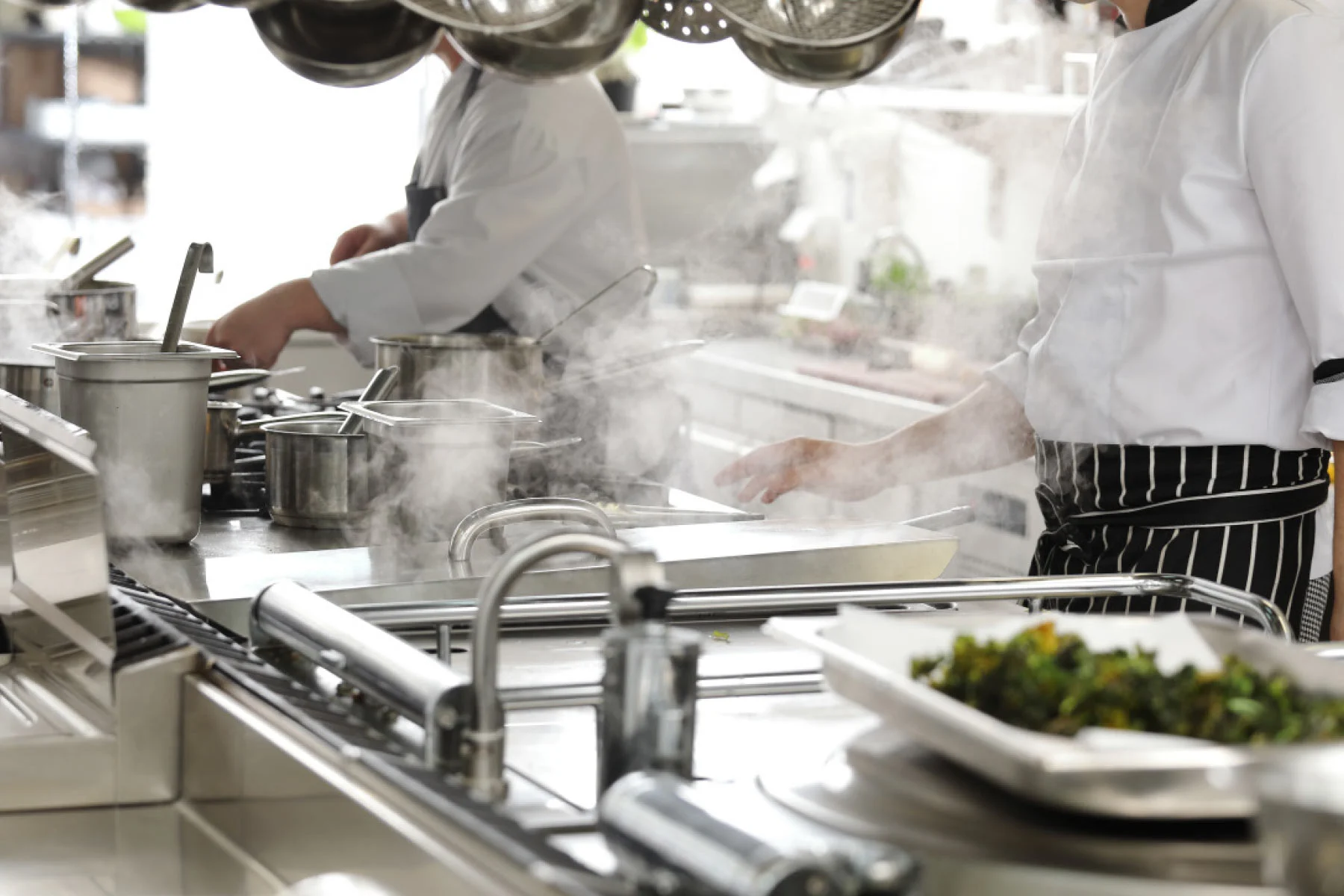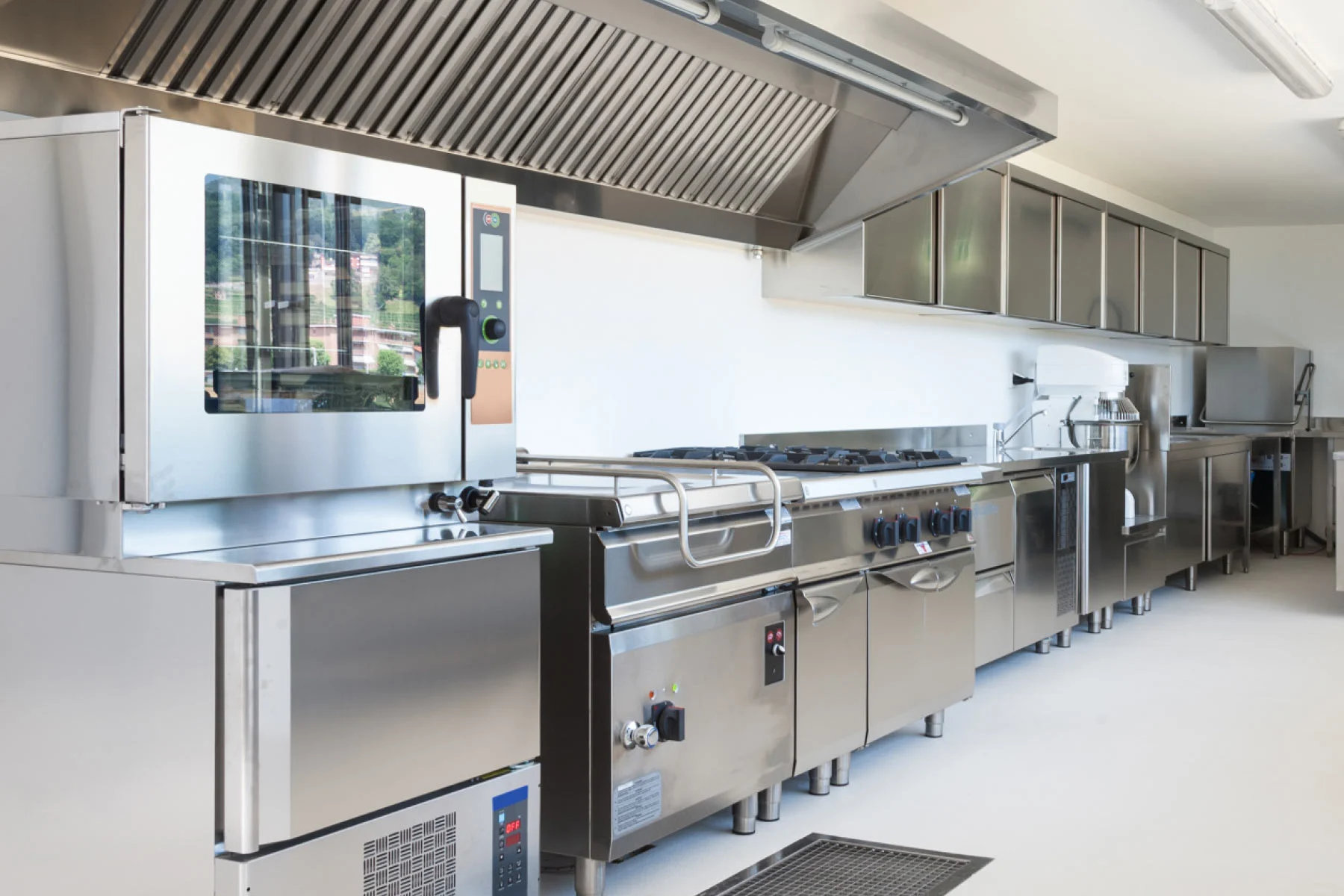Everything You Need to Know About Commercial Kitchen Design
Curious about designing a new commercial kitchen? You've come to the right place.
COMMERCIAL KITCHEN DESIGN IN 29 WORDS
When designing a commercial kitchen, understand your menu and regulations.
Next, choose the configuration, equipment, and principles to incorporate,
such as flexibility. Consider hiring an outside firm to help.
This helpful guide shares valuable tips and insights on a wide range of commercial kitchen design-related issues and topics, from where to begin and common configuration styles to key principles and considerations regarding layout, equipment, and execution.
Maybe you’re opening a brand new facility, and looking at an empty space. Perhaps you’re planning to renovate an existing kitchen. Either way, the task of creating a kitchen that will optimize your foodservice operation can be intimidating, and you may not know where to start.
Let’s begin with the basics.
While no two commercial kitchens are exactly alike, there are several fundamental steps everyone should follow when embarking on the road toward the perfect design. These might not be as exciting as strategizing where to install equipment and counters, but they’re important not to skip. Doing so will likely result in you having to come back to make time-consuming and expensive adjustments.
THE BASICS
1 Understand your menu.
If you’re contemplating designs and have not yet established your menu, or at the very least, determined what cuisine you’ll be serving, you’re getting a bit ahead of yourself.
Understanding your menu is a critical first step to assessing the needs of your kitchen. There’s no such thing as a generic kitchen that will work for every foodservice operation. Sure, there are certain staples of commercial kitchen design you’ll likely include no matter what, such as prep tables and washing stations, but the equipment you use and the way in which you arrange it will have a lot to do with the food you plan to serve.
This is a good time to begin involving your chef or foodservice team, too, if you haven’t done so already. He or she will have a good idea of what sort of configuration and equipment will work best for the menu. Since they’re the ones who’ll be working in the kitchen each day, it’s important they have input in how it will be designed.
2 Understand the space.
Measure it out. Understand exactly what you’re working with. Taking these measurements before you begin designing will make it easier in the long run.
Keep in mind: It’s not just square footage. Knowing where windows, doors and electrical outlets are is also important, especially when it comes time to design your kitchen’s workflow.
3 Understand your local codes and regulations.
You could design the best commercial kitchen in the world, perfectly configured for your exact needs. This would all be for naught, however, if you didn’t take your local codes and regulations into consideration. Organizations such as the Occupational Safety and Health Administration (OSHA), the Food and Drug Administration (FDA) and your state’s Department of Public Health set strict standards for food storage, safety, preparation, disposal, etc. Codes vary between states, counties and even cities, so it is important to familiarize yourself with these before starting your design—even if you’ve designed commercial kitchens elsewhere.
Finding your local codes and regulations online is easy, but they can sometimes be hard to understand. Consider making an appointment with a local inspector to get more information about how to stay compliant with your area’s laws.
The actual principles of commercial kitchen design.
To start, commercial kitchens should have spaces for the following seven necessary functions:

While there are virtually limitless ways to incorporate these, here are several
common configurations for commercial kitchens.
Island Configuration
As its name suggests, this style of kitchen features a central island surrounded by counter space along its edges. Typically, the island is equipped with ranges and ovens and primarily devoted to cooking, while the counters on the outer rim are primarily for food prep and other activities. However, depending on the specific needs of your kitchen and your preferences, you may decide to change the function of the island to an activity that better suits your operation.
 Assembly Line Configuration
Assembly Line Configuration
Assembly Line is a kitchen configuration style aligning its activities along a set and straightforward route. This is often utilized within restaurants serving small and simple dishes, such as sandwiches and burritos, and foodservice operations required to feed a large number of people very quickly.
Open Configuration
In this style, all or part of the Back of House (BOH) is exposed to your guests or customers. This is commonly seen in pizzerias, and might be a good option for an operation looking to increase transparency in food preparation, or even just offer guests an entertaining glimpse into the way their dishes are created. This style does, however, create greater pressure to maintain a neat and organized kitchen, so you’ll want to weigh this when considering such a configuration.

Ergonomic Configuration
Designing a kitchen with ergonomics in mind involves organizing it so that staff are comfortable while working and able to move as little as possible to complete tasks. Kitchens with Ergonomic Configurations position equipment and supplies in close proximity, so employees don’t need to reach, crouch, or walk from their stations to get what they need. While the physical wellbeing of team members is an important benefit of such designs, reducing movement also increases efficiency and reduces accidents. This type of configuration often conflicts with energy efficiency principles, which we’ll discuss later on.
Zoning Configuration
In a Zoning Configuration, each part of the kitchen is strictly devoted to a certain activity. While the exact zones depend on your needs and preferences, common zones in this style of kitchen include:
√ Prep
√ Cooking
√ Service
√ Dishwashing
Each zone has all of the required equipment and supplies for an employee working in it—eliminating the need to spend time searching the entire kitchen for the right tool. For instance, a prep zone should be fully equipped with cutting knives, blenders and anything else necessary for preparing raw ingredients, whereas a dishwashing zone should include ample compartmental sinks and cleaning supplies within easy reach.
Once you’ve decided which, if any, of these configurations might work best for your foodservice operation, you’ll want to start getting more into the specifics of how it will run.
Like we’ve stated, no two commercial kitchens are exactly alike. So you’ll want to decide which design principles you find most valuable, and incorporate them into your plans. Some major aspects to consider include...


Be sure to consider what equipment your kitchen will need.
The equipment that will go into your kitchen will greatly affect its design. Large appliances, such as refrigerators and ovens, demand adequate space, and most will also need to be close to electrical outlets.
While the specific equipment needs of your kitchen will depend on your menu, there are a number of pieces that are essential to any foodservice operation. Among these:
√ Refrigerators and Freezers
√ Food Processors and Mixers
√ Ovens and Ranges
√ Dishwashers and Compartment Sinks
You don’t have to go at it alone.
Even if you have a crystal-clear vision, the actual process of designing a commercial kitchen and creating plans that can be handed off to your building team can be challenging. Consider working with an outside firm to help you design it. That way, you’ll have a dedicated team of professionals who know the process.

